SEO made simple: 15 important SEO terms you need to know
Is SEO complex? yes. But can SEO made simple? the anwer is: of course. In today’s digital world, numerous articles aim to explain SEO effectively, and many succeed. However, SEO remains complex for many. Terms like keyword research, backlinks, interlinks, on-page SEO, and off-page SEO can seem unfamiliar and difficult to grasp. In this post, I will simplify these concepts to help you understand and improve your website’s rankings using what I’ll call “The SEO Metaphor”. So, grab a cup of coffee, and let’s get started.
SEO made simple: The SEO Metaphor
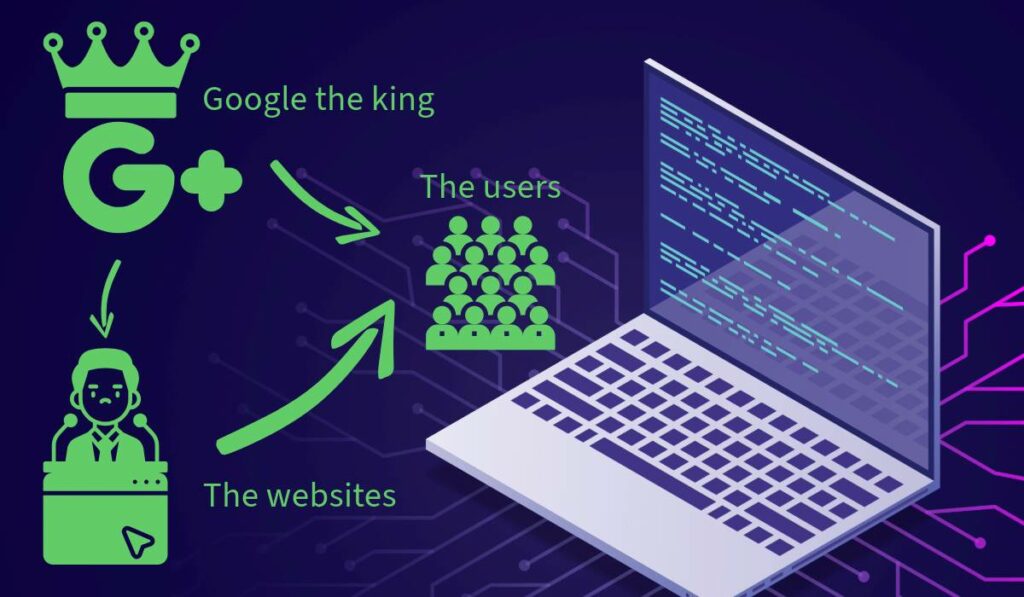
To grasp SEO more effectively, consider this SEO Metaphor: Imagine Google; it’s the website’s king. And the users are the citizens in Google’s realm. The websites are the candidates in a democratic election. Every website wants to win the election to be among the ministers of the Google government to serve and work for the people (the users). However, Google views all websites (candidates) equally, which is why it established numerous rules and standards for ranking in its search engine. It’s as if Google, the king, is declaring to all websites (candidates), “To achieve a higher ranking in my search results, you must adhere to these standards.”
So, what are these standards (optimizations) that you should make to get better rankings?
1. On-page SEO standards

On-page SEO, also known as on-site SEO, involves optimizing individual webpages and their content to enhance visibility on search engines like Google and improve user experience. This essential SEO strategy aims to boost organic rankings and drive more targeted traffic to your website.
Key on-page SEO tasks include aligning content with search intent, refining title tags, strategically placing internal links, and optimizing URLs.
In the following sections, we’ll explore various effective techniques for optimizing your website’s on-page elements to improve search engine rankings and attract more organic visitors.
Write quality content

Google’s role on the digital landscape extends far beyond its function as a mere search engine; it acts as a gatekeeper to the vast wealth of information available online, curating content in an effort to connect its users with the most relevant, useful, and authoritative resources.
This underscores the importance for content creators to align their efforts with Google’s core mission by prioritizing the development of high-quality content that doesn’t just aim to sell or inform, but truly enriches the user’s knowledge and experience.
To ascend the rankings on Google and secure a coveted spot on the first page of search results, it becomes crucial not just to understand the mechanics of Search Engine Optimization (SEO) but to apply this knowledge in the creation of content that is engaging, informative, and built around the genuine needs and queries of your target audience.
Moreover, achieving higher rankings on Google is not just about the immediate visibility or traffic it brings. It’s about establishing your website or blog as a credible source of information, a place where users can consistently come to find insights, solutions, and guidance that are both practical and thought-provoking.
This involves a dedication to thorough research, a commitment to clarity and accuracy, and a willingness to dive deep into subjects to uncover novel perspectives or compile comprehensive advice that stands out in a sea of surface-level content.
Creating such content also means staying abreast of evolving topics, understanding emerging trends, and responding to the shifting interests of your audience, thereby ensuring that what you offer remains not only high in quality but also in relevance. It’s about creating a resource where the value provided to the user is unequivocal, from detailed how-to guides and in-depth analyses to expert interviews and actionable tips that readers can apply in their lives or work.
In essence, securing a higher ranking on Google requires a synergy of quality content creation and SEO best practices, all aimed at serving the end-user. It’s a continuous process of learning and adapting, where success is measured not just by traffic or ranking alone, but by the real, tangible impact your content has on those who consume it.
By focusing on delivering content that offers substantial value, you don’t just aim to please algorithms but, more importantly, you contribute to the wealth of knowledge and information that Google strives to make accessible to all.
User-Focused content

Your blog should effectively answer users’ queries with engaging and easy-to-read sentences. Many bloggers focus on ranking rather than the user, but Google prioritizes user-friendly content.
Also, Content that is easy to navigate enhances the user experience, seamlessly integrating into the reader’s journey without causing disruptions. However, it’s crucial to encourage engagement if you aim to expand your online presence. The key lies in strategically prompting action without compromising the user’s experience.
Relevant Keywords

Include relevant keywords naturally, such as “best smartphone.” Incorporate them in headings and at the beginning of your blog or article. If you’re just starting, it’s advisable to use long-tail keywords like “best smartphones for gaming.” This strategy helps you attract visitors without competing against established, larger websites.
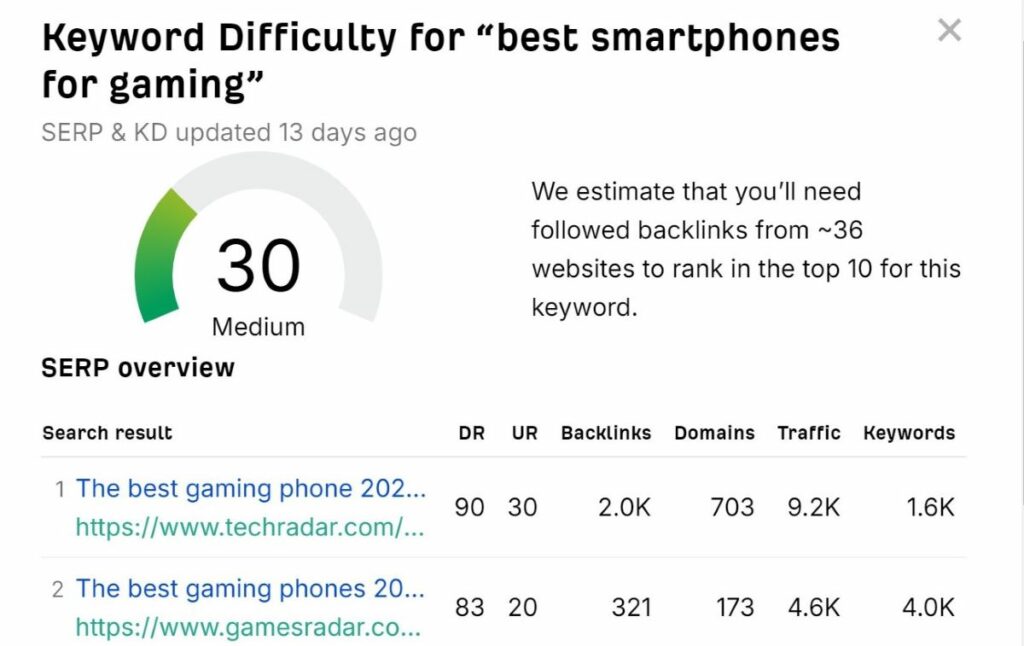
Fresh and Updated
Don’t write your article and forget it, as Google favors updated content with fresh information. Ensure you create evergreen content with lasting value.
Why?
The digital landscape is constantly evolving, with today’s hot topics potentially becoming yesterday’s news.
Regularly refreshing your blog content ensures it remains timely and aligns with the latest trends, information, and advancements in your field. This approach keeps you connected with your audience and establishes you as a trustworthy provider of the most current insights.
Structured content

It’s crucial to prioritize the organization of your blog posts to establish and maintain a clear structure. If visitors find your blog confusing or struggle to locate what they need, they’ll likely leave. Conversely, a well-organized and intuitive layout will encourage them to stay.
A common method bloggers use to organize their content is by categorizing posts by topic. Once categorized, you can further enhance organization by using tags on your website.
For instance, in the fitness niche, you can categorize your blog into sections like Home Workout, Weight Loss, Nutrition, and Fitness Tech.
To make your article easy to digest, use clear and appealing headings and subheadings (H1, H2, H3). Don’t forget to include lists and bullet points for busy readers.
Rich multimedia

Images, videos, and infographics help readers better understand the concepts presented in your article, aiding in clarifying your ideas.
Enhancing your blog with multimedia content can significantly elevate the user experience, making your posts more engaging and memorable. For instance, when writing about a new product, incorporating images and videos showcasing the product in action can provide readers with a clearer understanding of its features and benefits.
SEO Optimized

When adding your new title, ensure it’s relevant and concise. Your title and meta description should reflect the main topic of the page, pique your audience’s interest, and emphasize key benefits.
Incorporate pertinent keywords that align with search queries to captivate readers with precise and compelling details. This approach swiftly builds trust with your audience and enhances your Google rankings.
Moreover, the post URL should include the main keyword you’re writing about and keep it short.
All the website images must be tagged by adding alternative text that reflects the blog’s topic.
Interlinks
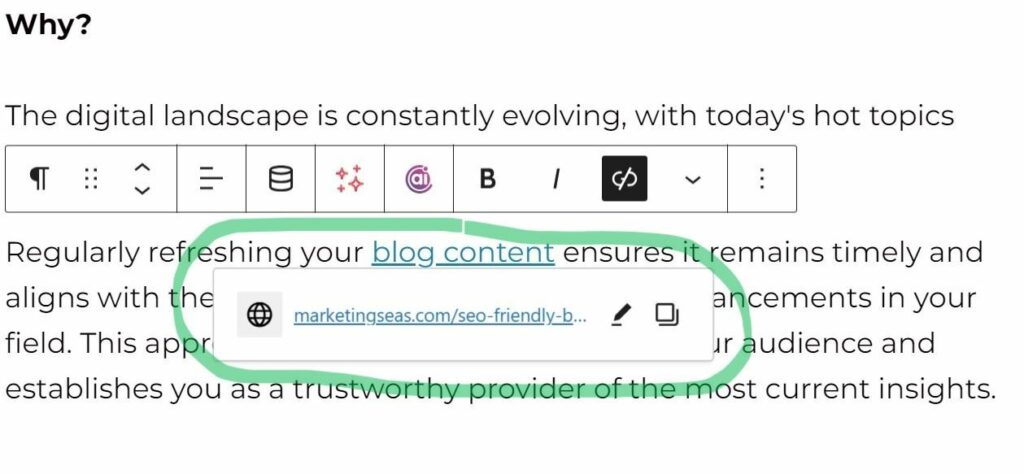
Interlinking blog posts, or internal linking, involves connecting one post to another using hyperlinks. This practice helps readers navigate through related content on your website. By strategically placing internal links, bloggers can direct users to relevant information within their site.
The primary purpose of interlinking your blog posts is to enable search engines to effortlessly crawl and index all your pages, clearly understanding your site’s structure. A well-organized structure ensures that all pages get indexed, making them more likely to match search queries.
Given Google’s aim to provide the best user experience and most relevant content, the quality of your site’s layout significantly impacts your search rankings.
External links

An external link, also called an outbound link, is a hyperlink that directs users to a page or resource on a different website. This contrasts with an internal link, which connects to URLs within the same domain.
Utilizing external links offers several benefits:
2. Off-page SEO

Off-page SEO is a crucial aspect of search engine optimization that focuses on external factors to enhance a website’s or webpage’s rankings in relevant search results. These off-site optimizations happen outside your website and encompass strategies such as link building, local citations, and various other techniques to boost your site’s authority and visibility.
Backlinks
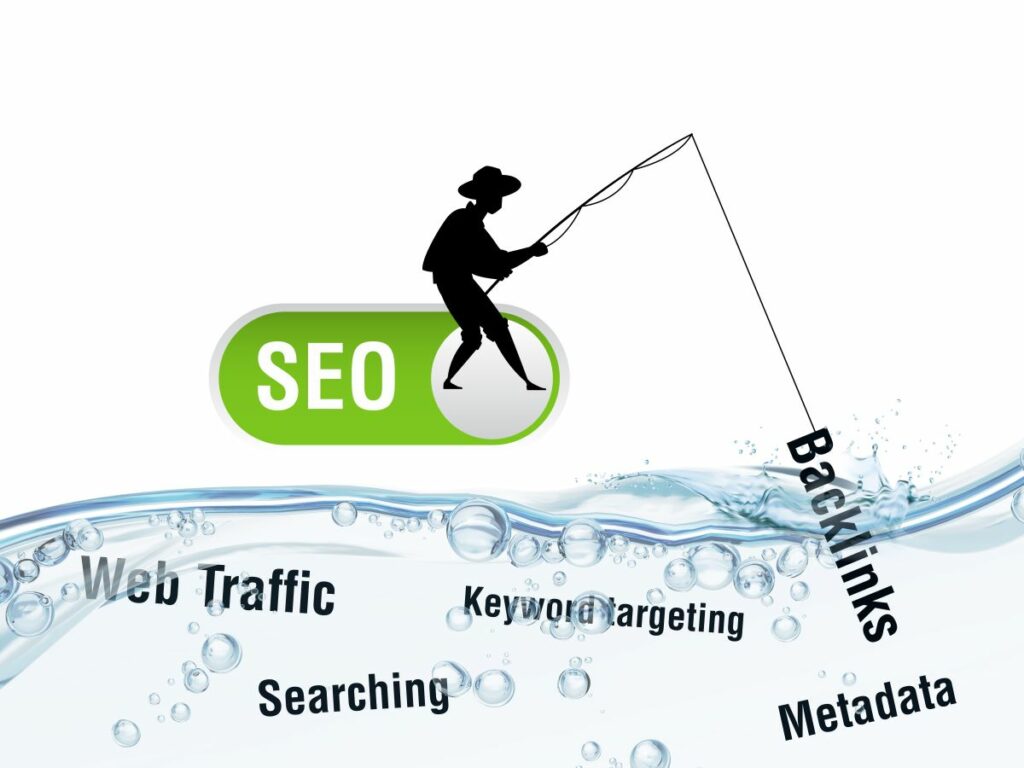
As I’ve mentioned above, all the websites are equal from Google’s point of view. But to get ranked higher in search engines, Google elaborated a “democratic system” to rank websites. Your website should get “votes” (backlinked) from others to ensure the trustworthiness, authoritativeness, and credibility of the created content.
In this democratic system, your website needs backlinks (votes) from authoritative online businesses to get ranked.
But what are the backlinks?
A backlink occurs when one website links to another using anchor text. For instance, you’ll often see articles referencing other sources or websites through backlinks. These references are widespread across the internet, particularly on prominent blogs that link to related content.
Google’s ranking algorithm relies heavily on backlinks to assess a website’s authority. Pages with numerous high-quality backlinks generally achieve higher search engine rankings.
Google views backlinks—outbound links to your website—as significant trust signals, a fact well-documented through various studies. The algorithm uses a page’s backlink profile to determine its suitability for ranking in search results.
A backlink profile encompasses both the quantity and quality of links pointing to a site. Typically, websites with more and better-quality backlinks tend to rank higher on Google. However, it’s important to recognize that while backlinks play a crucial role, they are not the sole determinant of your search engine ranking.
Mobile-Friendly
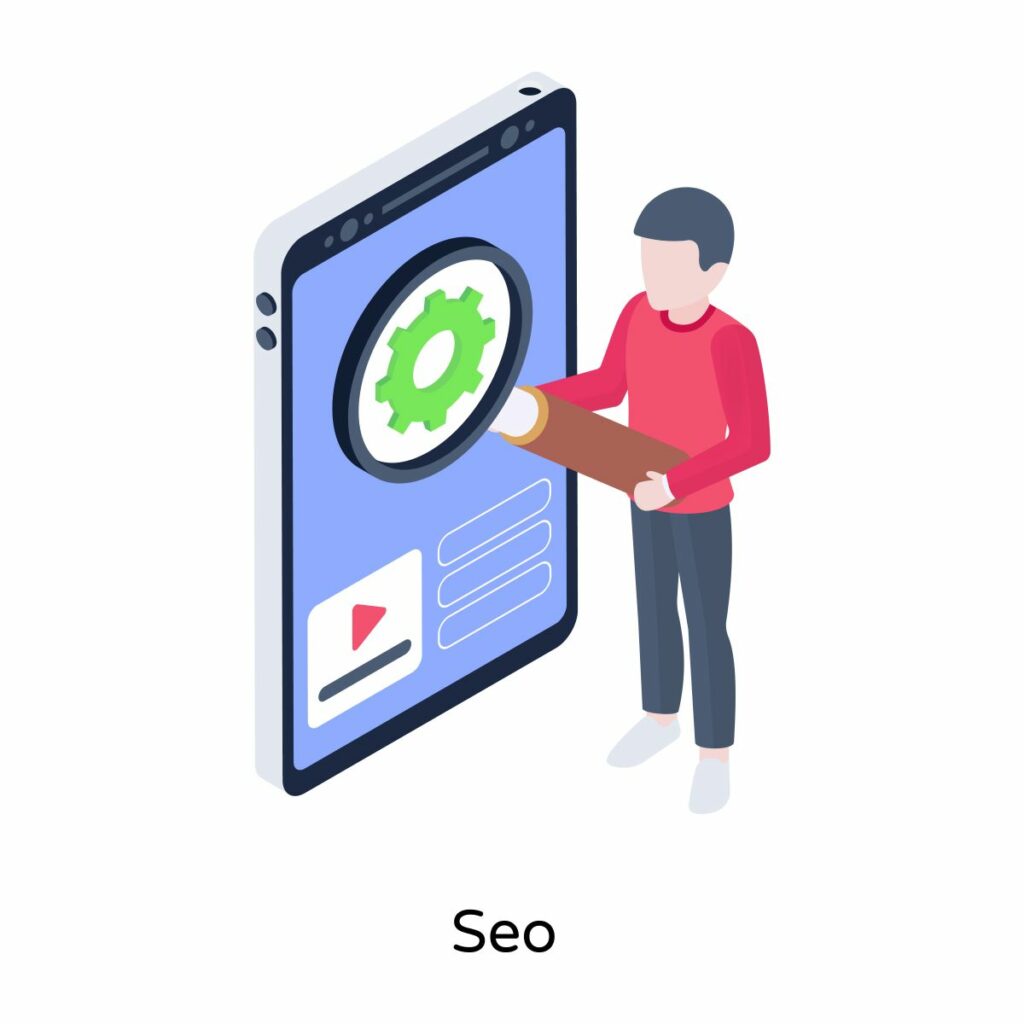
Mobile-friendly design and SEO involve crafting websites that seamlessly adjust to various screen sizes and devices. Unlike older websites that may appear distorted on mobile screens, mobile-friendly sites ensure a uniform and intuitive user experience regardless of the platform used.
The website King (Google) knows that most users are using their mobiles to search on the web. Then, responsive design is required for on-page SEO, Why? You may ask.
Let’s read this chart:
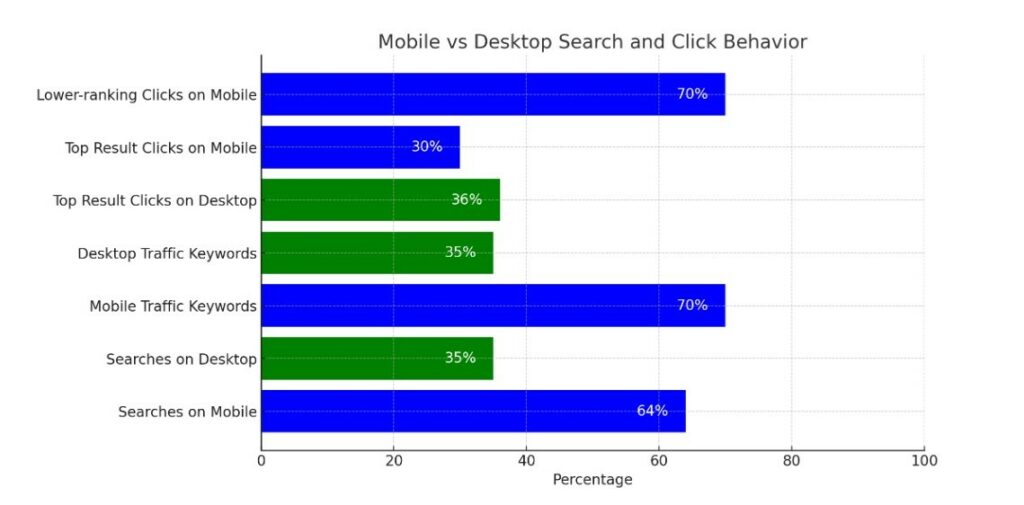
A notable 64% of searches now occur on mobile phones, overshadowing the 35% conducted on desktops. Furthermore, keywords driven by mobile traffic outnumber those associated with desktops by more than double. On desktops, almost 36% of users click the top result, whereas just under 30% do so on mobile devices. Mobile users are also more inclined to click on lower-ranking search results.
So, make sure that your website design is easy to navigate on all devices.
Page Speed
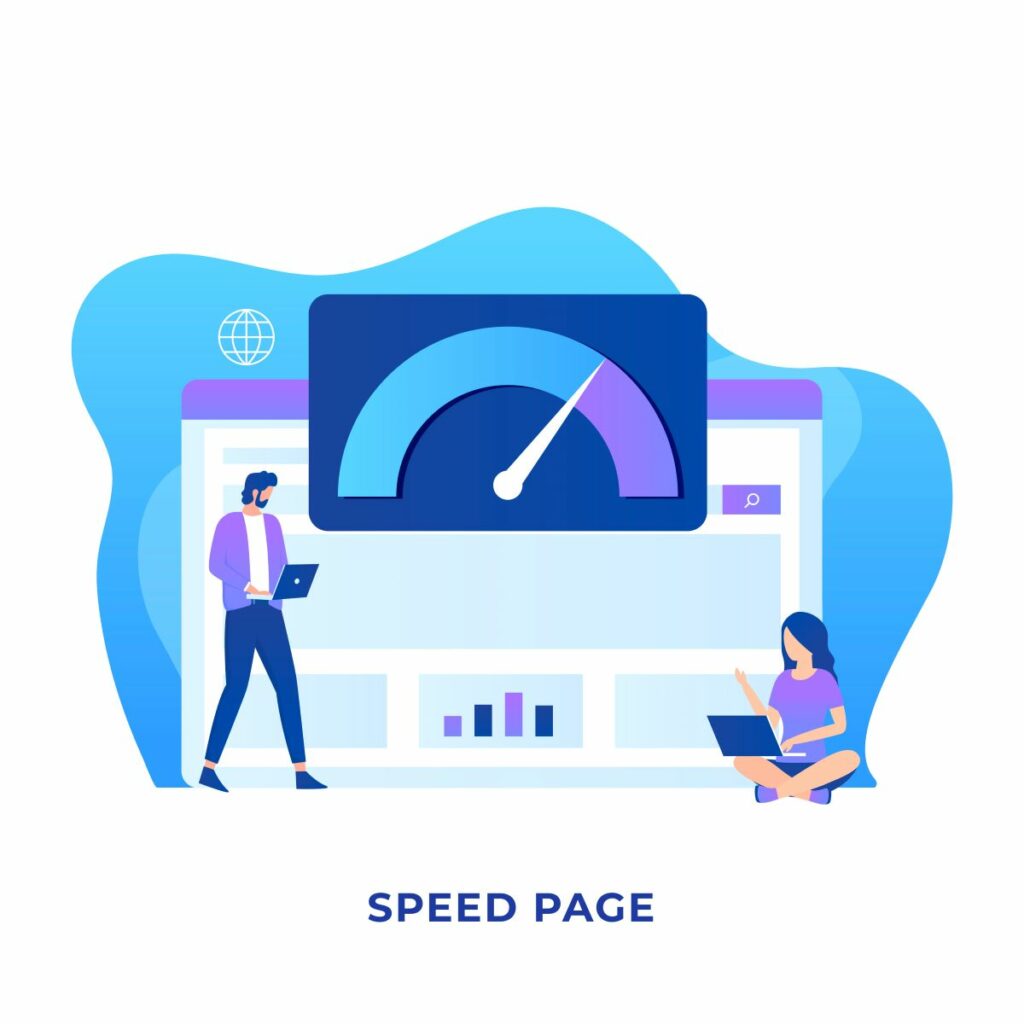
Page speed refers to the time it takes from when a browser requests a page to when it finishes processing and rendering the content. Several factors influence page speed, including the amount and type of content, the distance data travels, connection type, device, operating system, and browser.
Google wants to deliver content to its users as fast as possible. But if your website pages are slow, then their ranking will be negatively affected.
Moreover, when you or your company publish a website, the goal is to influence visitors to take specific actions: consume content, make a purchase, use your application, visit a physical location, or view your brand favorably. Page speed significantly impacts user perception; if your page loads slowly, you risk losing visitors before it fully loads. In fact, by 3 seconds, you may lose 45% of your audience. Even a 500-millisecond decrease in page speed can negatively affect perceptions of your site, brand, and products. Slow page speed can undermine your objectives and reduce revenue.
Crawlability
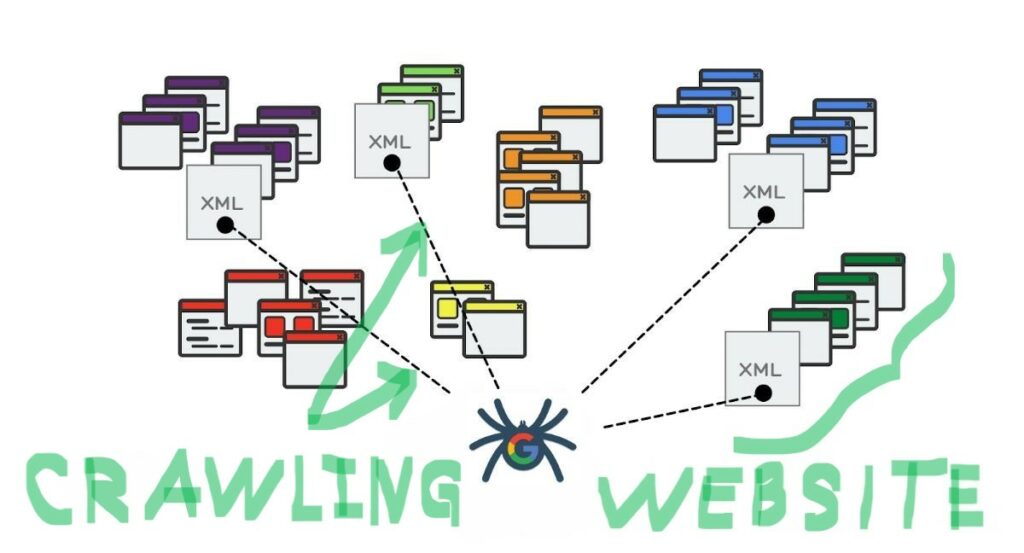
Crawlability refers to the ability of search engine crawlers to read and follow links within your site’s content. Imagine these crawlers as spiders navigating through countless links across the web. Indexability, on the other hand, means that search engines can include your site’s pages in search results.
Having a crawlable and indexable site is crucial!
If your site lacks these attributes, you could be missing out on significant potential traffic from Google search results. This lost traffic equates to lost leads and revenue for your business.
How can you check if your site is indexed?
It’s simple. Visit Google or another search engine and type “site:” followed by your site’s address. The search results will show how many of your pages have been indexed.
How to make my website easy to crawl?
Make sure to optimize the aspect of your website:
Final words
SEO is a powerful strategy for attracting new audiences interested in your business. By optimizing your website for search engines, you can drive increased traffic to your site, facilitating ongoing business growth.mo
Hope you understand SEO. I’ve tried to simplify to you as clearly as I can using the above SEO metaphor. Thanks for reading.







